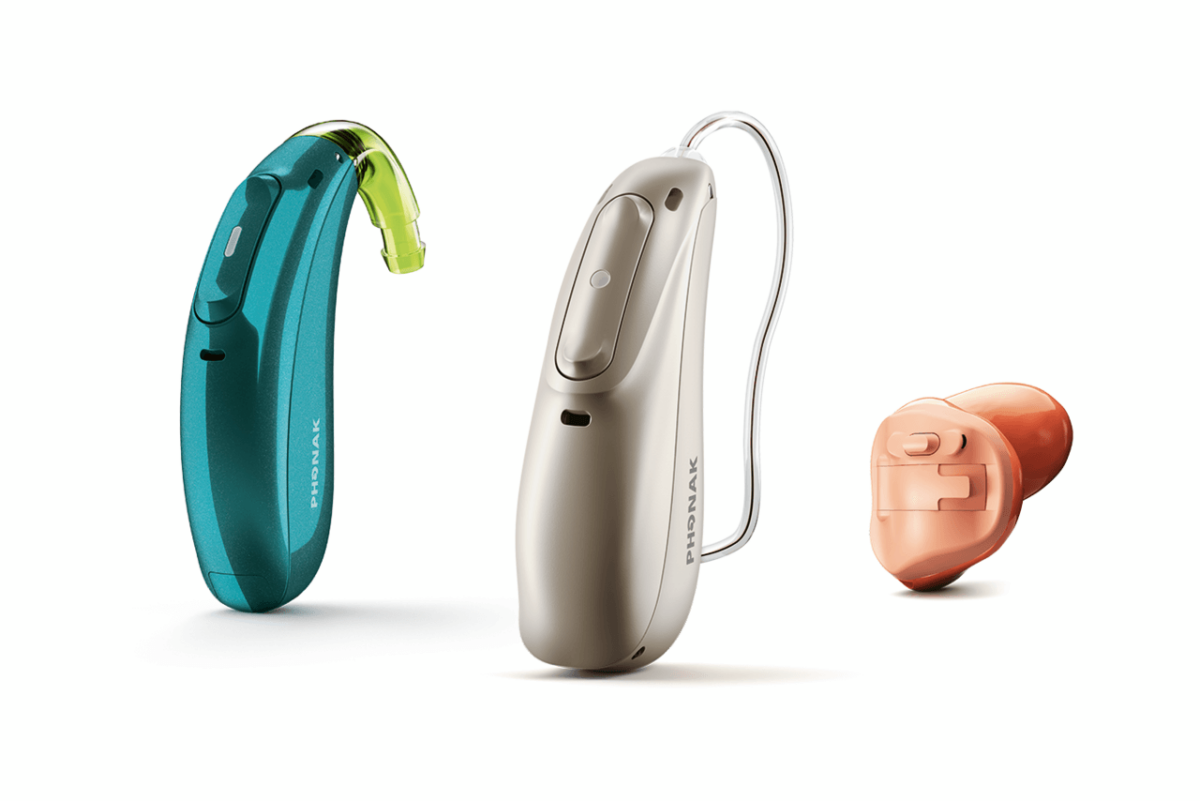If you are ready to choose a pair of hearing aids, the options can be daunting. Looking through different styles and models can make you wonder about the benefits and detriments of each different type. If you are overwhelmed with the options, the good news is that you don’t need to decide alone! Our hearing health professionals are here to guide you in your hearing aid decision. We will take the information about your needs and connect you with the information you need to make your decision. Even though we will guide you through the process, it can be helpful to understand something about the different types that are out there. Let’s take a look at the two major types of hearing aids: In-The-Ear (ITE) models and Behind-The-Ear (BTE) models. Within each style are a variety, as well.
ITE Hearing Aids
In the ear hearing aids contain all components within the ear canal. These models can look very sleek, and some are even completely hidden from view. One of the benefits of this kind of hearing aid is this low-profile look, and they can be quite efficient with such a small style. That same small style can be difficult for those who have arthritis or other dexterity issues. Within this general type you can find Invisible-In-Canal (IIC) and Completely-In-Canal (CIC) models. These can be completely hidden from view, but some people have trouble with a muffling sound, otherwise known as occlusion. These models are particularly appealing for those who don’t want others to see their hearing aids. Other kinds of ITE hearing aids include In-The-Canal (ITC) and Low-Profile hearing aids. These are slightly larger than IIC or CIC models, but they can be easier to insert and remove for those who have trouble fumbling with small objects.
BTE Hearing Aids
These hearing aid models have two components that are connected by a small tube. One piece is placed in the ear canal, much like ITE hearing aids. The other component sits behind the ear, making it possible to place the microphone and larger features in this additional component. Within the general style of BTE hearing aids, there are two main types. The first are Receiver-In-The-Ear (RITE) hearing aids. These models have a small earmold that sits in the ear, containing the receiver and speaker. The microphone and amplifier sit in a separate unit, making it possible to have the best sound quality. The other subtype of BTE hearing aids is Behind-The-Ear with Earmold. The only difference here is that the unit sitting in the ear is slightly larger, making it easier to manipulate. The benefits of all BTE hearing aids include the sound quality and ease of working with them, making it easy to insert and remove. In addition, if you damage the speaker that sits outside the ear, that component can be replaced or repaired without dealing with the other component that sits in the ear.
Making Your Choice
When you think about your decision to choose hearing aids, what are your top priorities? If you are interested in keeping your hearing aids hidden from view, then an ITE model might be right for you. You can even ask if IIC hearing aids will work for you, keeping them completely hidden from view. If audio quality is your top priority, then you might prefer a BTE model. Finally, if you know that you have trouble with manual dexterity, you will likely want to get a bigger style of hearing aid that is easier to insert and remove. Be sure to discuss these considerations with our hearing health professionals to get a better sense about what options are right for you and to make sure that we have all the information we need to help you make the right decision. If you haven’t yet started the process of seeking hearing aids, the first step is to get an updated and accurate hearing test. Our specialists can give you a full diagnostic exam, which will also help you determine which models are appropriate for your individual needs. The time is now to make the appointment for your hearing test, and we will take the rest of the process from there.

